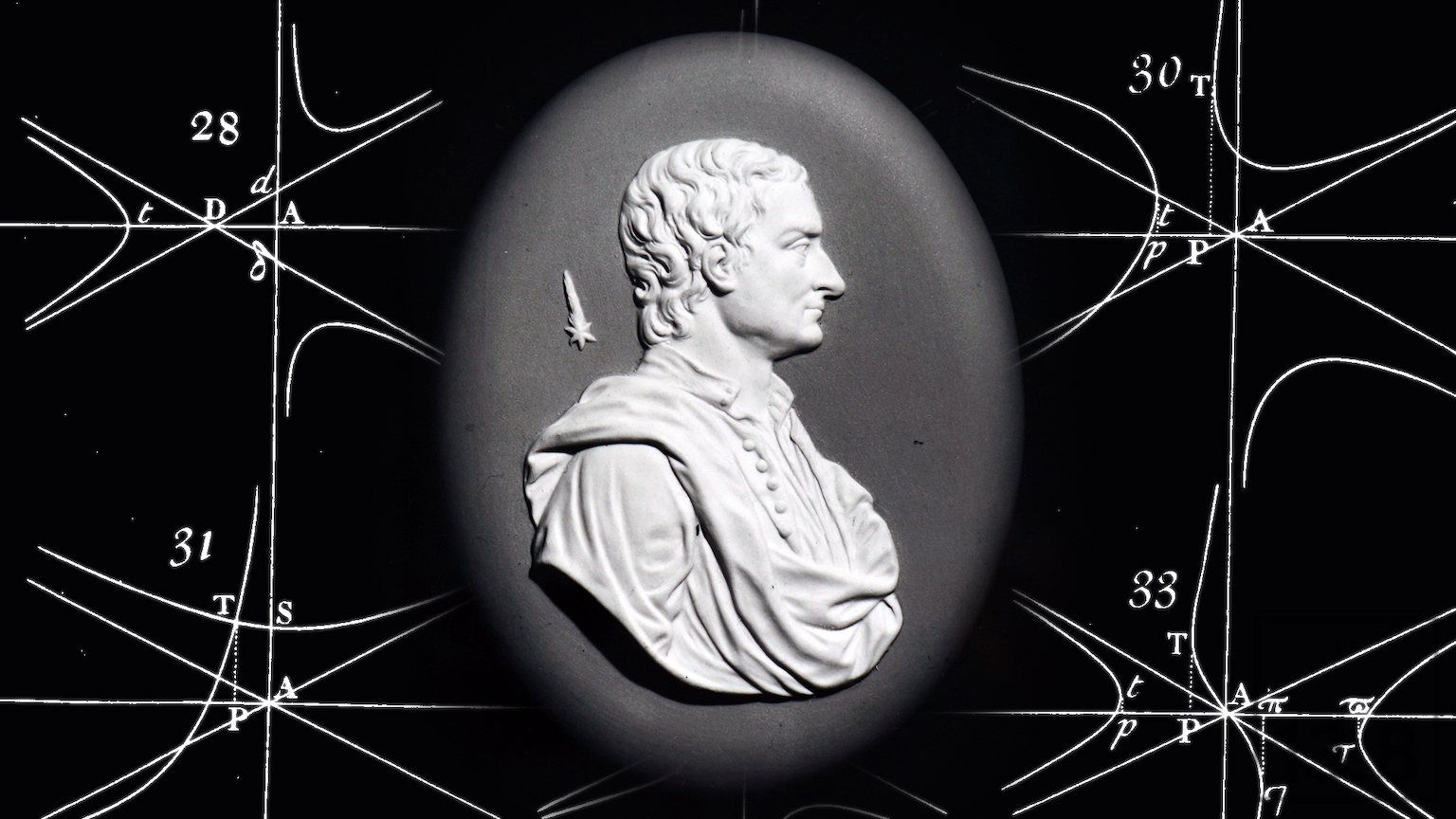Respect alchemy. The crazy, criminal pursuit gave us modern science

- Despite alchemy's association with spiritual quests and mysticism due to its symbolic and riddle-laden texts, alchemists had meticulous observational and experimental abilities.
- Alchemy contributed to the foundations of modern chemistry through techniques like distillation, condensation, calcination, and through the isolation of substances like ethanol, sulfuric and nitric acid, zinc, and phosphorus.
- However, alchemy's reputation suffered due to its association with fraud, the lack of an accurate conceptual framework for its practices, and its habit of secrecy. Still, it deserves to be rehabilitated.
In the 13th century, Italian alchemists used techniques they had learned from Muslim books recently translated into Latin to isolate a remarkable substance. It was a clear liquid like water, but felt icy cold to the touch. And they were astonished to find that, when soaked into a rag, it would burn with a subtle flame while leaving the rag itself unconsumed by the fire. This elixir went by various names, most commonly aqua vitae, or the water of life. When herbs or spices were steeped in the liquid, it was believed to be a powerful medicine that enabled the active ingredients of the botanicals to be more effectively absorbed into the body. Today, we know aqua vitae as “alcohol.” However, it wasn’t until the 16th century that the word acquired this meaning, when a physician called Paracelsus applied al-kohl, an unrelated Arabic term for a fine powder, to aqua vitae. Incidentally, people still enjoy a drink made from soaking botanicals in strong spirits. It’s called gin.
Alcohol and gold
Giving alcohol a faux-Arabic name was a typical ploy by alchemists. In an effort to enhance the cachet of their books, some created Arab personas, pretending that they were actually Eastern savants. For example, around 1400, Paul of Taranto wrote under the name “Geber” to exploit some of the prestige of a legendary Muslim alchemist called Jabir ibn Hayyan. This habit of using pseudonyms has caused endless confusion for historians trying to distinguish between the Latin translations of Arabic books and original European compositions falsely ascribed to long-dead Muslim authors. That is one reason we cannot be certain who exactly first discovered alcohol.
The books attributed to “Geber” include other important breakthroughs, including the synthesis of nitric acid. This was an especially evocative discovery because it can dissolve gold. Infamously, alchemists sought to transmute base metals into gold by using a substance called the philosophers’ stone. The theory behind transmutation said that all metals were a combination of mercury and sulfur, while the philosophers’ stone itself was comprised of exceptionally purified versions of these elements. The proportion of the two ingredients determined what was produced. Alchemists assumed that metals formed in the ground over a long period and sought to use the philosophers’ stone as a catalyst to accelerate this process in the laboratory. Miners had long known that lead ores commonly contained some silver and silver ores sometimes harbored gold, which was taken as evidence that conversion from lead to the noble metals occurred naturally.
A riddle wrapped in a mystery inside an enigma
A number of medieval alchemists were Franciscan friars. Paul of Taranto, who used the pseudonym Geber, was one. Roger Bacon was another. For them, successful transmutation required the right motivation. As Franciscans, they had taken a vow of poverty and had little interest in getting rich. Their main concern was that the end times were imminent, during which good Christians would find themselves in a war for survival with the anti-Christ. Roger Bacon thought of alchemy as a way to gain a technological edge over the enemy, so that the forces of good might prevail. Alchemists were aware that knowledge of how to create gold could be misused if it fell into the wrong hands, so they wrote in riddles and ciphers to prevent that from happening.
The apocalypse was postponed but this did nothing to dampen the appeal of alchemy. Its golden age was the 17th century, in the midst of what we call the Scientific Revolution. Enthusiasts included Sir Isaac Newton, as well as Robert Boyle, who successfully lobbied for the art to be legalized in 1689. It had been banned in England three centuries earlier over concerns that alchemists could thwart the royal monopoly to mint gold and silver coins.
Despite the support of respected thinkers like Newton and Boyle, alchemy went into a sudden and terminal decline after 1700. The mass of books and manuscripts left behind, written for those in the know and making little sense to later readers, led to a misunderstanding of what the craft was about. Nineteenth-century scholars interpreted alchemical writings as being allegories. Transmutation from lead into gold was read as a metaphor for a spiritual quest whereby the alchemist sought to purify his soul. This was an understandable error given that alchemical writings could be expressed in poetry, puzzles, and emblematic diagrams. Once the art of deciphering these texts was lost, it made sense to assume they were expressing higher truths rather than practical instructions.
Alchemical medicine
In recent years, researchers have uncovered the empirical substance beneath the opaque language of alchemy. Lawrence Principe, an academic chemist as well as a historian, has painstakingly recreated the processes in the old texts, achieving results that often appear exactly as their authors described even when these seem impossible to modern science. But there is a catch: the alchemists didn’t always understand what they were doing, so Principe has to use modern chemical analysis to show what is really happening. He presents several examples showing that alchemists were meticulous observers and great experimentalists in his book The Secrets of Alchemy. For instance, using a text called The Triumphal Chariot of Antimony, that appeared around 1604 under the pseudonym Basil Valentine, Principe attempted to generate a medicine called “sulfur of antimony.”
Antimony is a dull and toxic metal, which was believed to have therapeutic effects with the right dosage. Valentine described a process whereby antimony ore could be purified of its noxious elements, thereby making it safe to consume while preserving its medicinal efficacy. Healing had long been part of the repertoire of alchemy, and physicians inspired by Paracelsus established a school to rival the traditional followers of the ancient Greek doctor Galen.
Principe decided to try out the method for making antimony non-toxic, which would be near-miraculous given the laws of chemistry. Initially, he had a marked lack of success. He started by roasting antimony sulfide, the naturally occurring ore, and then melted the resulting oxides. Valentine claimed this produced a yellow, glassy substance, but Principe just obtained a grey lump. Then he realized he was using modern samples rather than the unrefined materials that Valentine had to employ. Sourcing some impure antimony ore from Eastern Europe, Principe repeated the procedure and created beautiful amber-colored crystals exactly as described in The Triumphal Chariot of Antimony. It turned out that, unbeknownst to Valentine, the ore was contaminated with iron, and this was responsible for the desired outcome.
The yellow glass was just an intermediate step. As he continued to follow Valentine’s recipe, Principe found he had to match exactly the conditions under which the alchemist worked. In that way, he was eventually able to produce Valentine’s “sulfur of antimony,” which was not poisonous and, indeed, had a slightly sweet taste. However, on analysis, it turned out that the material contained no antimony at all. The laboratory processes had washed it all away, such that the resulting “medicine” was actually iron acetate, entirely made up of impurities picked up during its manufacture. While non-toxic, this substance has no medicinal applications we are aware of.
The philosophy of alchemy
Principe’s work has proved that the alchemists were fine empirical investigators. Despite being expressed in code, their instructions set out the information required to replicate their work. Unfortunately, alchemists lacked an accurate conceptual framework to comprehend what they were doing. Metals are not made of mercury tinctured with sulfur, and transmutation to gold is impossible outside a nuclear reactor. Furthermore, alchemists looked upon nature holistically. This led them to identify many correspondences in the world, such as between the seven visible planets in the heavens, the seven traditionally recognized metals, and various parts of the body. These links between the microcosm and the macrocosm — between celestial and mundane things — pointed to a purposeful universe but were, nonetheless, seen as entirely natural. Alchemy wasn’t magic.
Despite the deficiencies of their theories, the endless trials and errors of the alchemists handed down an important legacy to modern chemistry, including the isolation and description of substances such as ethanol, sulfuric and nitric acid, zinc, and phosphorus. Techniques like distillation, condensation, and calcination, as well as the apparatus to carry them out, were first perfected by alchemists. Not only that, but phlogiston, the principle of combustion that was a centerpiece of 18th-century chemistry, was a direct descendant of alchemical sulfur. It was Joseph Priestley’s unsuccessful attempts to prove the existence of phlogiston that led him to isolate oxygen in 1774.
Why alchemy was doomed
So, how did alchemy get such a bad rap? Partly, because it had always been associated with fraud. Although the English had prohibited alchemy on the grounds it might work, most medieval laws against it were aimed at con artists hawking “get rich quick” schemes. Honest practitioners were tarred by the same brush and weren’t helped by the fact that they couldn’t create gold either. Even when alchemists weren’t treated as criminals, they were pitied as fools wasting their money and impoverishing their families in pursuit of a hopeless quest. Its notoriety meant that chemists of the 18th century were motivated to disown alchemy even while they built on its achievements. And when science took a reductionist turn during the Enlightenment, the holistic philosophy of alchemy became something of an embarrassment.
This means there is a case for historians to rehabilitate the alchemists. We should reject the picture of them as magicians and mystics. And while there were swindlers who sold fool’s gold to the gullible, many alchemists really believed in what they were doing. However, it is as technicians and experimenters that they most deserve our respect. When so many of the methods of modern chemistry can be traced back to alchemy, their prowess in the laboratory demands recognition.
The feature of alchemy that has been most detrimental to its reputation was the habit of secrecy. Although we now know it was more grounded in practical experience than previously imagined, it was still opaque to unenlightened readers. Welcoming scrutiny is one of the great scientific virtues, allowing ideas to be criticized and experiments to be replicated. Even though modern chemistry has made remarkable progress thanks to its alchemical foundations, it needed to disown the ethos of concealment in favor of communalism, publication, and the free exchange of ideas. Ultimately, alchemy was doomed by its rejection of openness.





